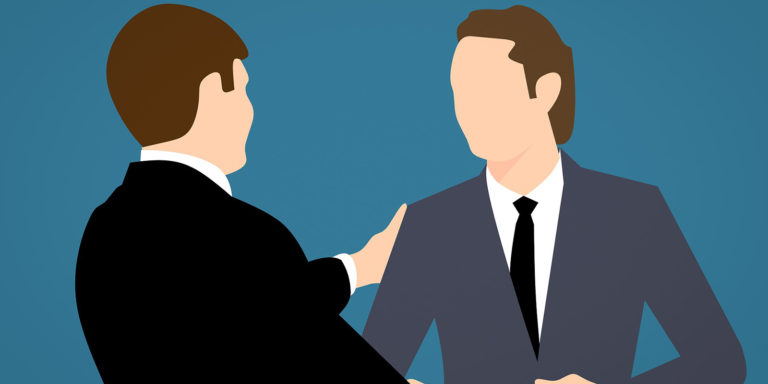
Webinar: Tuesday, April 29th @1pm
Winning at Retention-
Proven Strategies to Reduce Cancellations, Winback Customers & Drive Lifetime Value
Sign up Now

Any sales manager can tell stories about finding and then onboarding sales talent only to lose them within the first year. Open sales roles appear repeatedly on every company career page no matter the industry. In fact, sales organizations usually have the highest churn rate of any part of an enterprise. Overlay that with the Great Resignation, and you have a recipe for great disruption – and not in a good way.
So the question is this: How can your company effectively onboard new sales professionals and set them up for success over the long haul?
Sales functions really do see the most churn. HubSpot reports that sales turnover is nearly three times higher than any other function. And research by SiriusDecisions indicates that 45% of B2B sales organizations report annual turnover rates higher than 30%.
The nature of sales is highly competitive, and the rise of remote work has removed geography as a prerequisite for many jobs. This has added fuel to the fire in the competition for sales.
Research conducted by Bridge Group indicates that the average tenure of an SDR is around 18 months. Considering the average SDR has 3.2 months of ramp time, that means the average SDR has only 15 months of full productivity before the costly process of replacing and training their replacement begins. The Society for Human Resource Management (SHRM) pegs the cost of finding and training an employee’s replacement at six to nine months of an employee’s salary.
This vicious cycle of recruiting, hiring, onboarding, and losing sales talent is hemorrhaging company capital while exhausting and demoralizing staff.
Sales rep onboarding is one crucial aspect of this cycle that is often overlooked as a powerful tool in retaining talent. Companies have the opportunity to better manage how their new talent digests new information and acclimates themselves to the organization. This creates either the risk of perpetuating the same cycle of disappointment for both the new hire and organization, or an opportunity to change the experience and create a system for new reps’ success.
Onboarding new hires spans the gamut of touchpoints that shape an employee’s view of the organization and ability to do their job with excellence. With hybrid work as the seemingly lasting norm, technology takes center stage as the battleground for successful or unsuccessful onboarding.
Will the new talent you just spent weeks (if not months) hiring have the tools to do their best work both at home and in the office? Perhaps even more importantly, will technology be a powerful tool for these employees to accelerate productivity and exceed their professional goals, or will it become a hindrance?
According to McKinsey, the combination of smart tools and strong adoption translates into higher sales. In fact, McKinsey claims that sales outperformers are 62% more effective in using digital tools. On the flip side, inability to use these tools leads to poor data integrity and slowed sales velocity.
Sales teams often have dozens of complex and unintuitive applications and pieces of software at their fingertips that end up underutilized or ignored. In some cases, the value gained from the company’s investment in the software doesn’t justify its price tag. In the (all-too-common) worst-case scenario, organizations are investing in technology that actually hinders the productivity of their salespeople by creating complexity and confusion.
To remove this friction from the sales process and maximize overall value from technology investments, companies are turning to digital adoption platforms (DAPs) to drive successful adoption of technology across the organization. DAPs provide customized user guidance on software and applications, like a GPS for how to use a particular technology to best do your job.
DAPs are powerful productivity-boosting solutions that increase the adoption of those frustrating and often-avoided applications in companies’ tech stacks. To sales professionals, this means being able to easily extract insights from a CRM without having to interrupt their workflow, for example. Sales leaders can overlay important information and customize the onboarding experience for new hires directly in the various applications. With CPQ, CRM, sales intelligence, and prospecting software all in play with a new sales hire, DAPs can help leadership discover the path of least resistance for sales representatives to understand all the technology at their disposal and how best to harness it for success.
Optimizing the use of technology during the onboarding process means quotes get to customers faster, deals close faster, and AE ramp time decreases. Simply put, salespeople with the right technology stack and the critical understanding of how to fully use those tools thrive and stick around.
Companies with an onboarding plan that strategically employs a DAP to firmly plant technology resources on the path to accelerate a salesperson’s productivity will enjoy the many benefits of lower sales team churn rates. As such, sales leadership should think about employees’ digital experience during the onboarding process and beyond. With the complete visibility into performance that DAPs provide, management can quickly identify friction points and course-correct using in-app guidance, engagement, and process automation – leading to higher job satisfaction across the sales team.
Aliisa Rosenthal is a seasoned sales executive with over 15 years of experience building high-performing sales teams. She is currently VP Commercial Sales at Walkme. Previously, she led Enterprise Sales at InVisionApp and MidMarket sales at Mixpanel. Aliisa holds a degree from Brown University and resides in San Francisco with her husband, two children, and one chocolate lab.
Get the latest sales leadership insight, strategies, and best practices delivered weekly to your inbox.
Sign up NOW →